All The Weathers
All that weathers, is a collection of stories that navigate turbulent tides of change. Set against the backdrop of interior Bengal, Kashmir and Central India, eight stories emerge that set the premise for a dialogue on mental health, portraits of sisterhood, the inheritance of music, a champion sportswoman from a rural community, the aftermath of an ecological disaster, the interweaving of religion with politics, and performing arts on the brink of extinction.
It's true even if it's a tale
Ayan BiswasFear has been a dominant theme in a lot of Bengali folklore. It reveals the identity and culture of a changing society with all its hidden agonies.
This work has been inspired by a Bohurupi artist from rural Bengal who embodies imaginary characters for a living. He introduced me to this world of spirits often found residing in abandoned spaces. They are victims of malnutrition, poverty and other malices that pushed them to the fringes. I was touched by these tales that alchemise the fear of the unknown into familial elements of everyday life laced with humour.
As time passed, these oral traditions became a way of connecting the mariginalized communities to the rest of society. Yet, the social status of these artists remains precarious. Now they are faced with a renewed identity of this art form in the age of digital entertainment.
This work has been inspired by a Bohurupi artist from rural Bengal who embodies imaginary characters for a living. He introduced me to this world of spirits often found residing in abandoned spaces. They are victims of malnutrition, poverty and other malices that pushed them to the fringes. I was touched by these tales that alchemise the fear of the unknown into familial elements of everyday life laced with humour.
As time passed, these oral traditions became a way of connecting the mariginalized communities to the rest of society. Yet, the social status of these artists remains precarious. Now they are faced with a renewed identity of this art form in the age of digital entertainment.







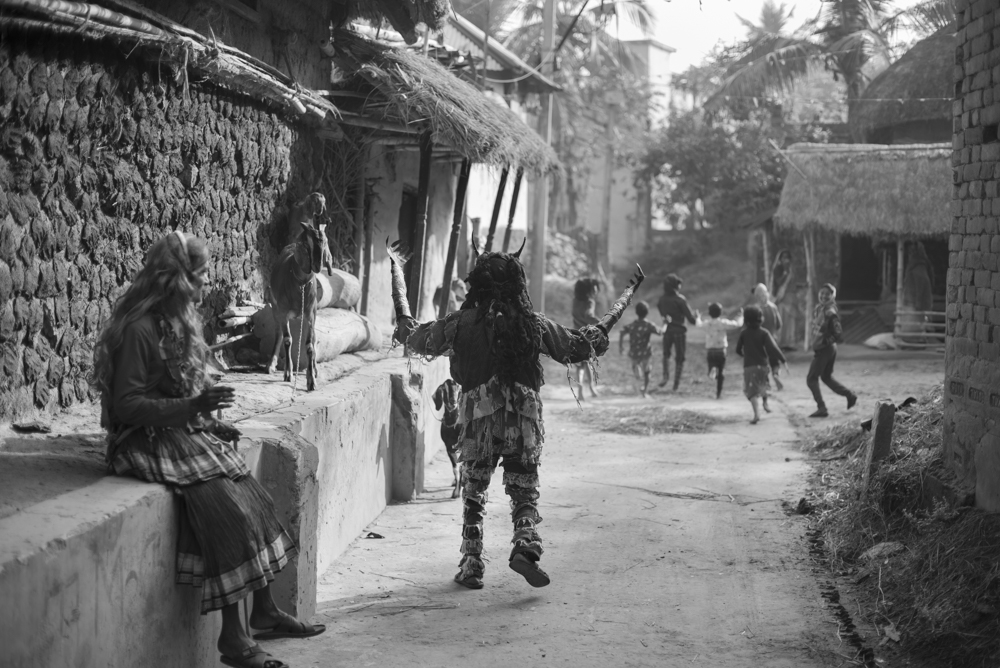



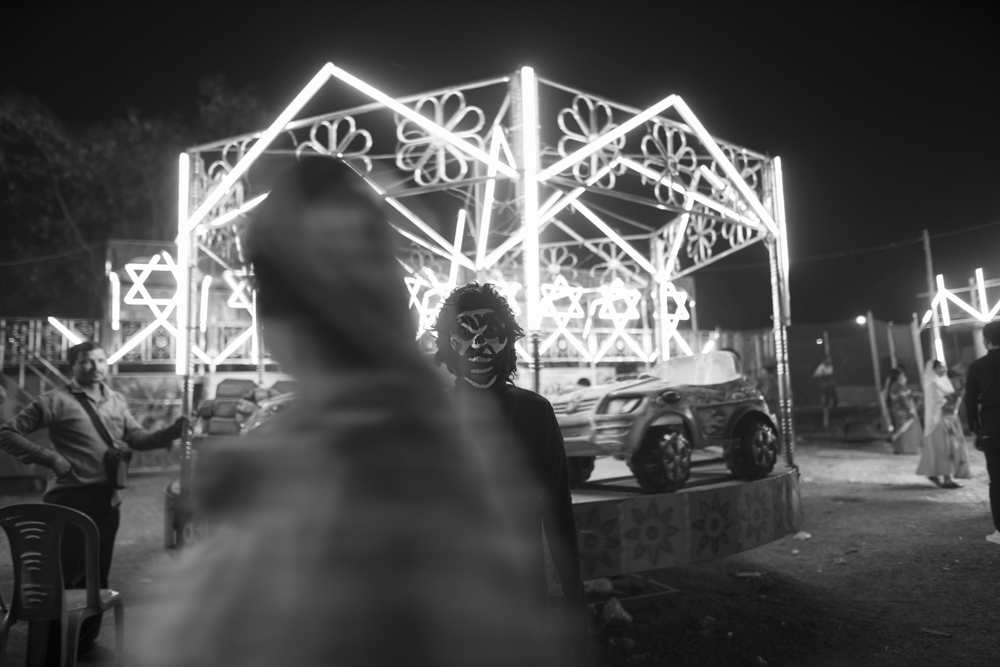



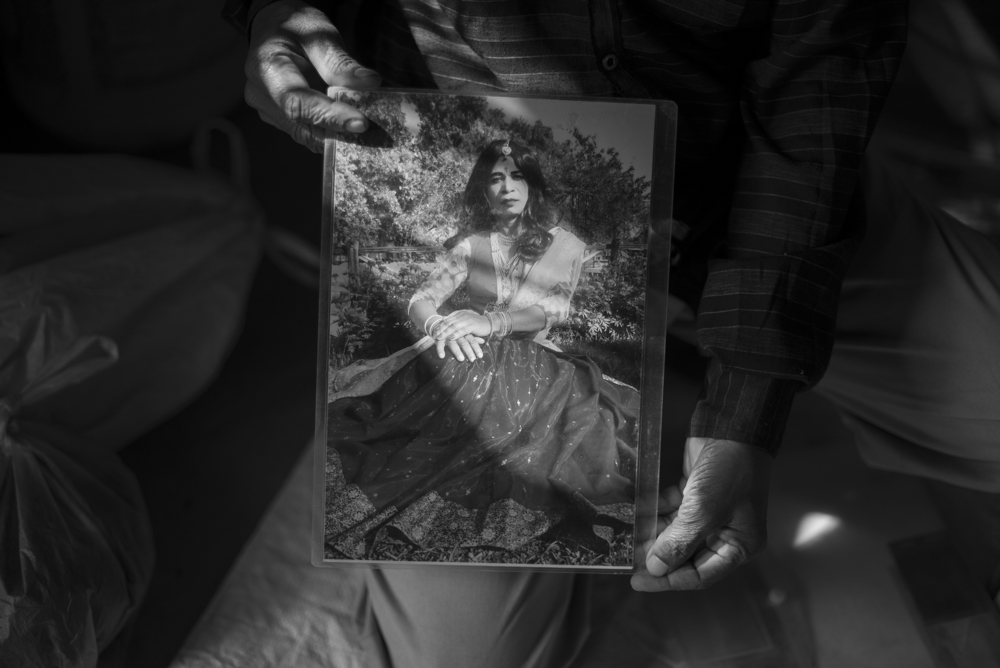











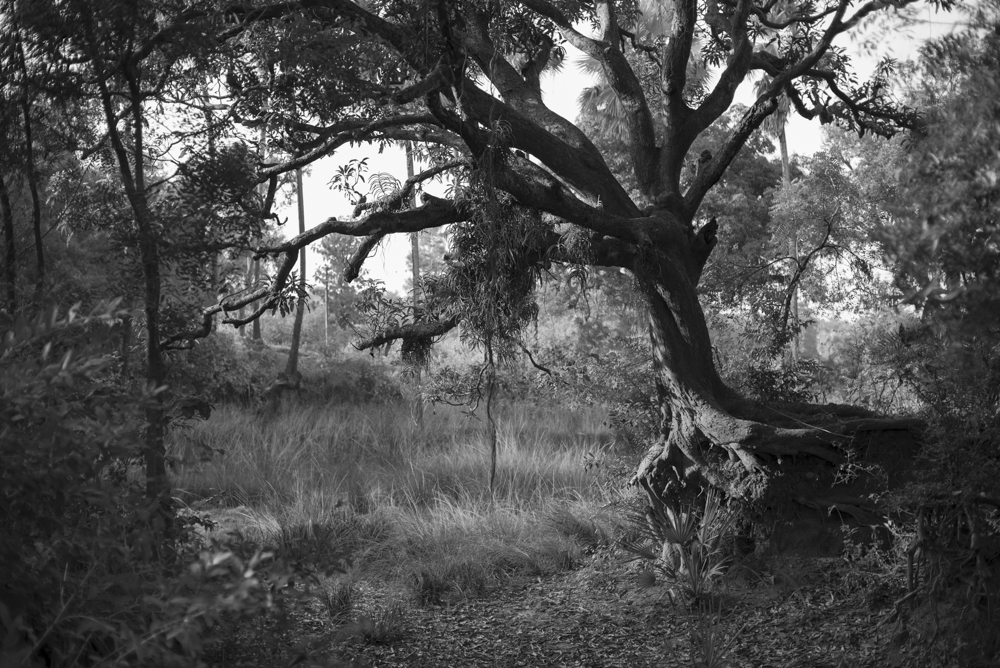
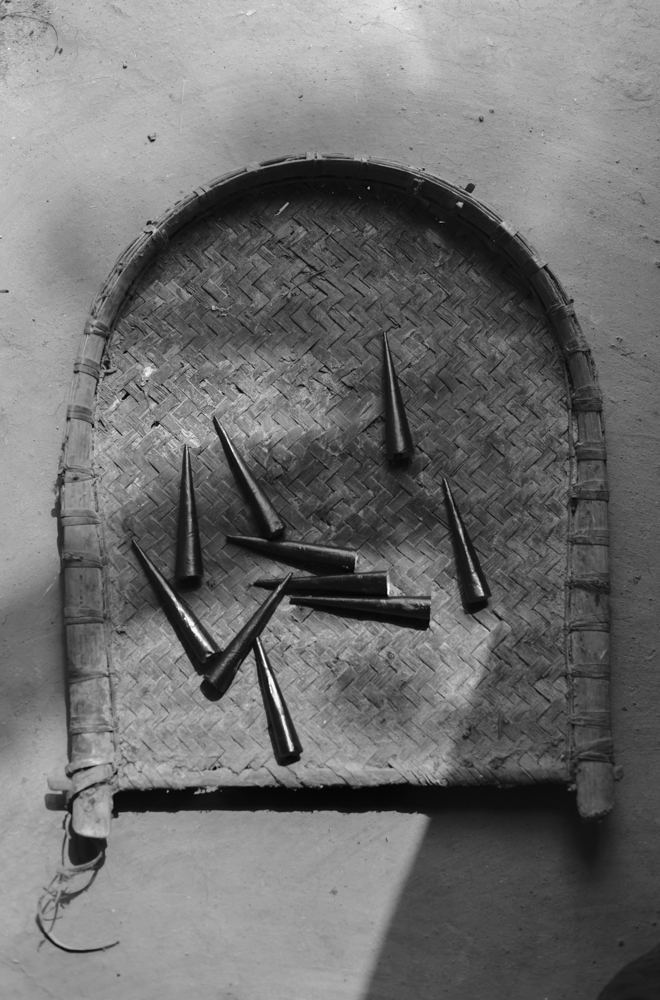




When The Dust Settles
Brihat Rai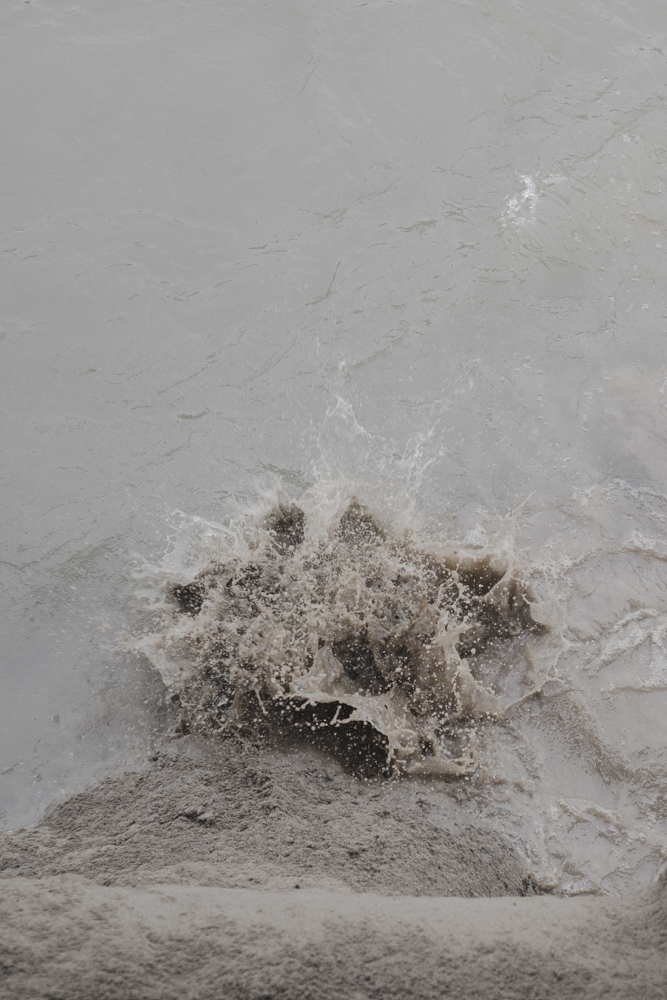
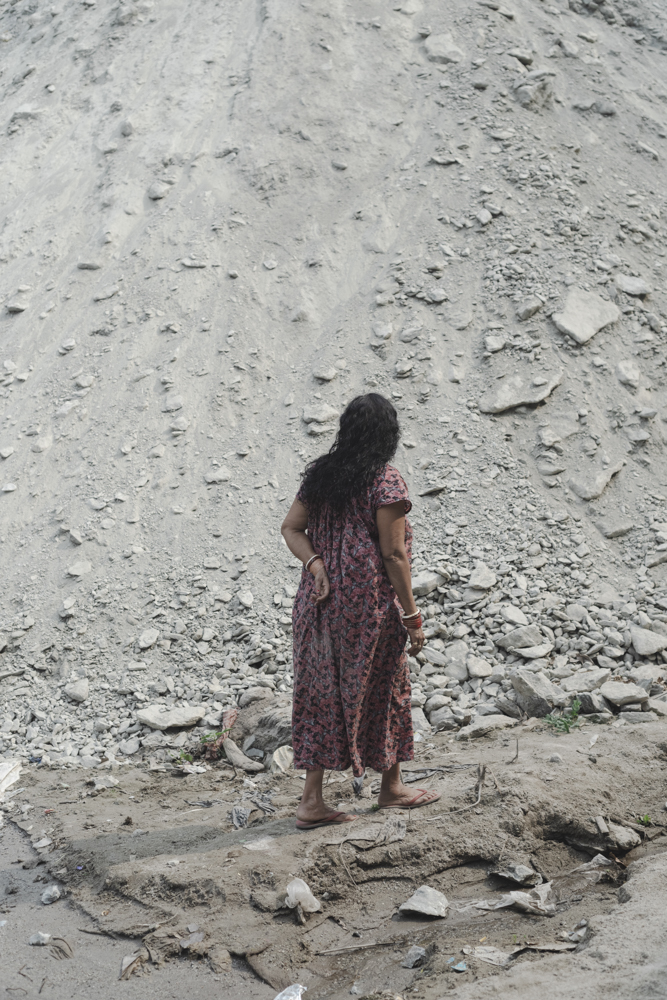

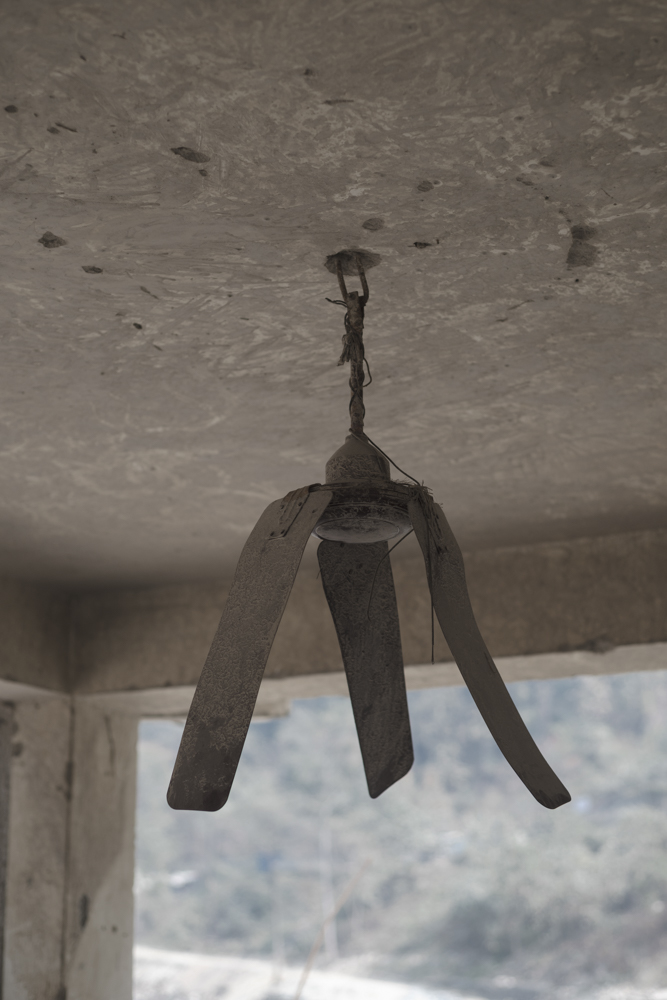


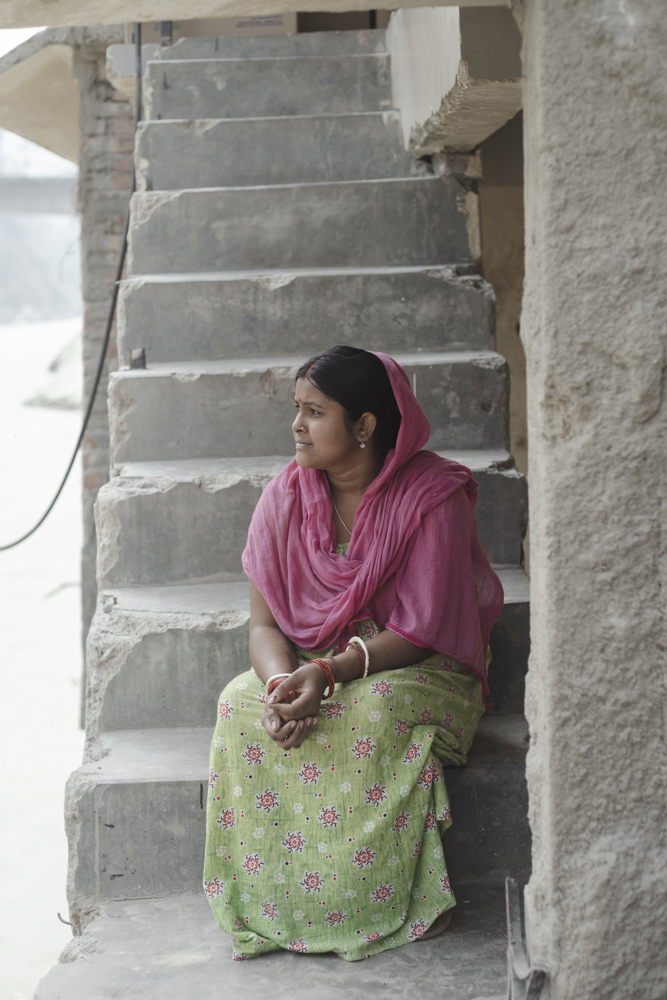


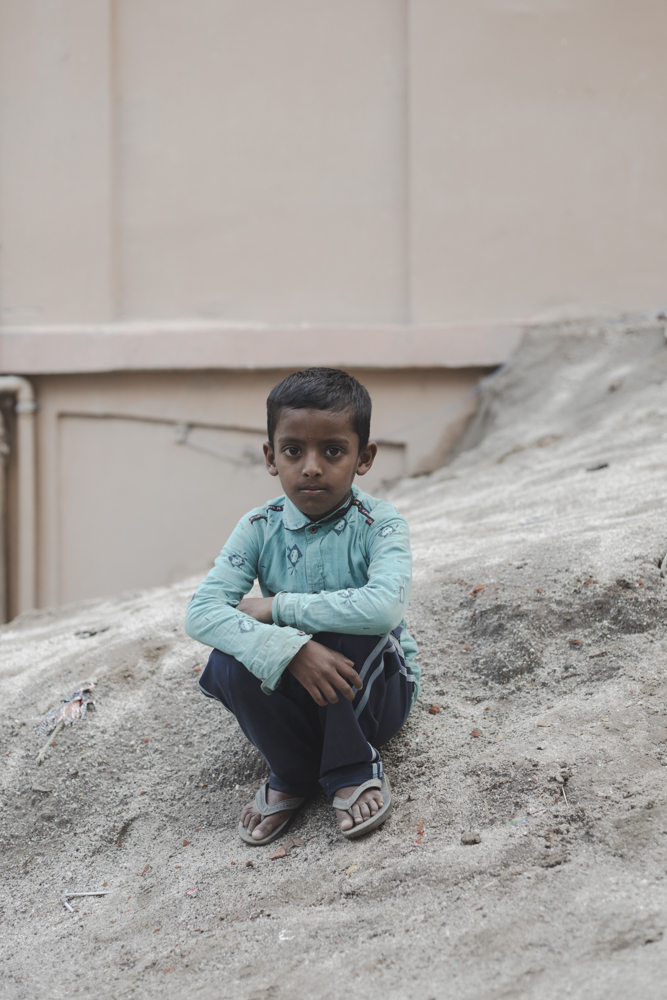
A glacial lake outburst ood occurred on October 4, 2023, as a result of intense rainfall that forced the glacial South Lhonak lake in Sikkim, a state in northeastern India, to over ow its banks. Before the Teesta III Dam's gates could be opened, the ood arrived in Chungthang at midnight, completely destroying the structure in a matter of minutes. The Teesta River had a 20-foot (6.1-meter) rise in water levels downstream, resulting in extensive damage to the banks.
A little town called Teesta Bazaar is situated beside the Teesta River in the state of West
Bengal. The area was seriously destroyed and numerous homes and facilities were washed away by the glacial lake outburst ood. Since then, the catastrophe victims have been in constant agony. People's resilience is perceived as being rather low, with their hopes shattering between the decisions made by political parties and larger institutions regulating the river.
This work attempts to investigate the impact of the disaster on the area, its inhabitants, and their recovery.
A little town called Teesta Bazaar is situated beside the Teesta River in the state of West
Bengal. The area was seriously destroyed and numerous homes and facilities were washed away by the glacial lake outburst ood. Since then, the catastrophe victims have been in constant agony. People's resilience is perceived as being rather low, with their hopes shattering between the decisions made by political parties and larger institutions regulating the river.
This work attempts to investigate the impact of the disaster on the area, its inhabitants, and their recovery.
Where the day begins?
Elodie GuignardThis series has been shot in a village in West Bengal, close to the Bangladesh border. Immersed in daily life and activities, I have photographed the villagers, and particularly, a group of young women.
The images tell stories and combine di erent imaginations: my own and that of the people I photographed. Set in natural surroundings, these photographs are trying to reveal and bring out elements of dream and magic.
It's a question of anchoring, of the body's relationship to space, to the land, to the territory. It's about taking on a body and embodying it in the earth through a gesture, a posture, a look. This is achieved through role-playing and the construction of ‘characters’, taking inspiration from painting and literature.
It's about transmission(s) and passage(s), of intimate and collective territory(ies), of the past, present and future, of secrets and memories, of the invisible and the visible, of limited states and frontiers, of childhood, girlhood, at the crossroads between dream and reality.
The images tell stories and combine di erent imaginations: my own and that of the people I photographed. Set in natural surroundings, these photographs are trying to reveal and bring out elements of dream and magic.
It's a question of anchoring, of the body's relationship to space, to the land, to the territory. It's about taking on a body and embodying it in the earth through a gesture, a posture, a look. This is achieved through role-playing and the construction of ‘characters’, taking inspiration from painting and literature.
It's about transmission(s) and passage(s), of intimate and collective territory(ies), of the past, present and future, of secrets and memories, of the invisible and the visible, of limited states and frontiers, of childhood, girlhood, at the crossroads between dream and reality.



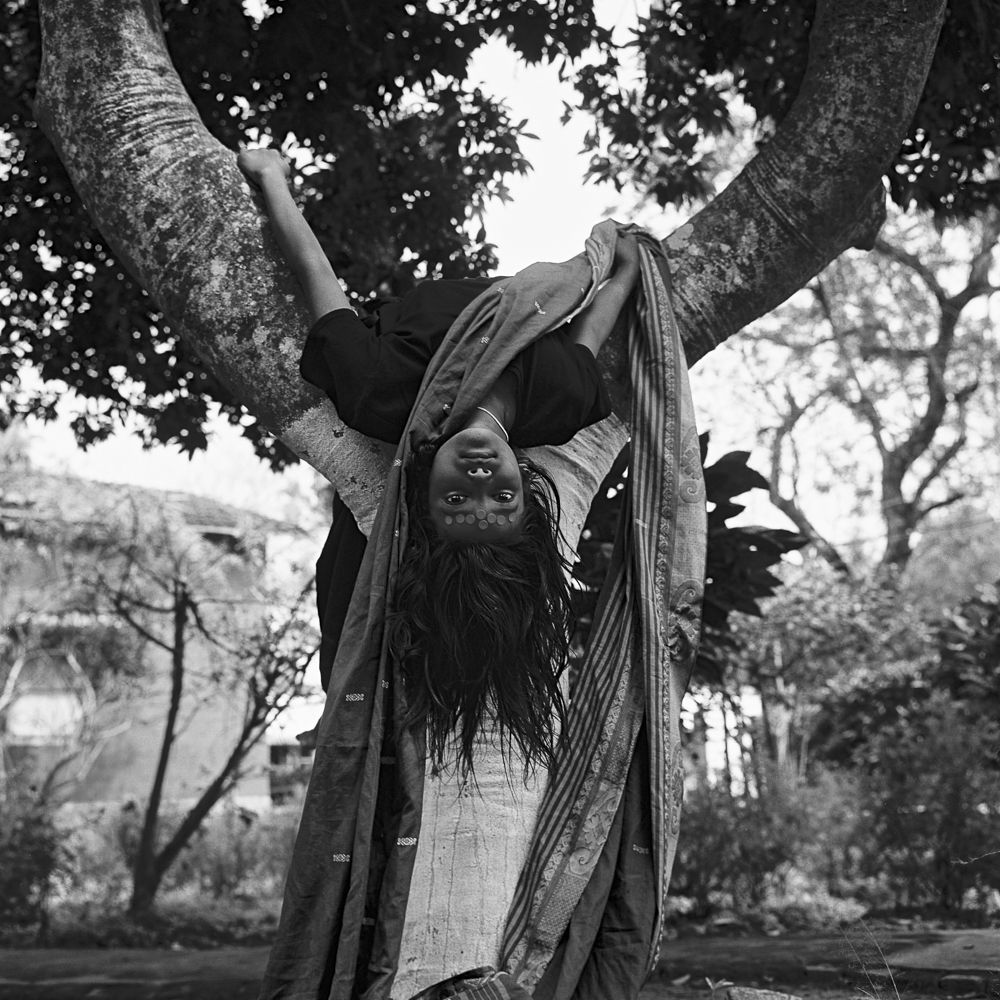


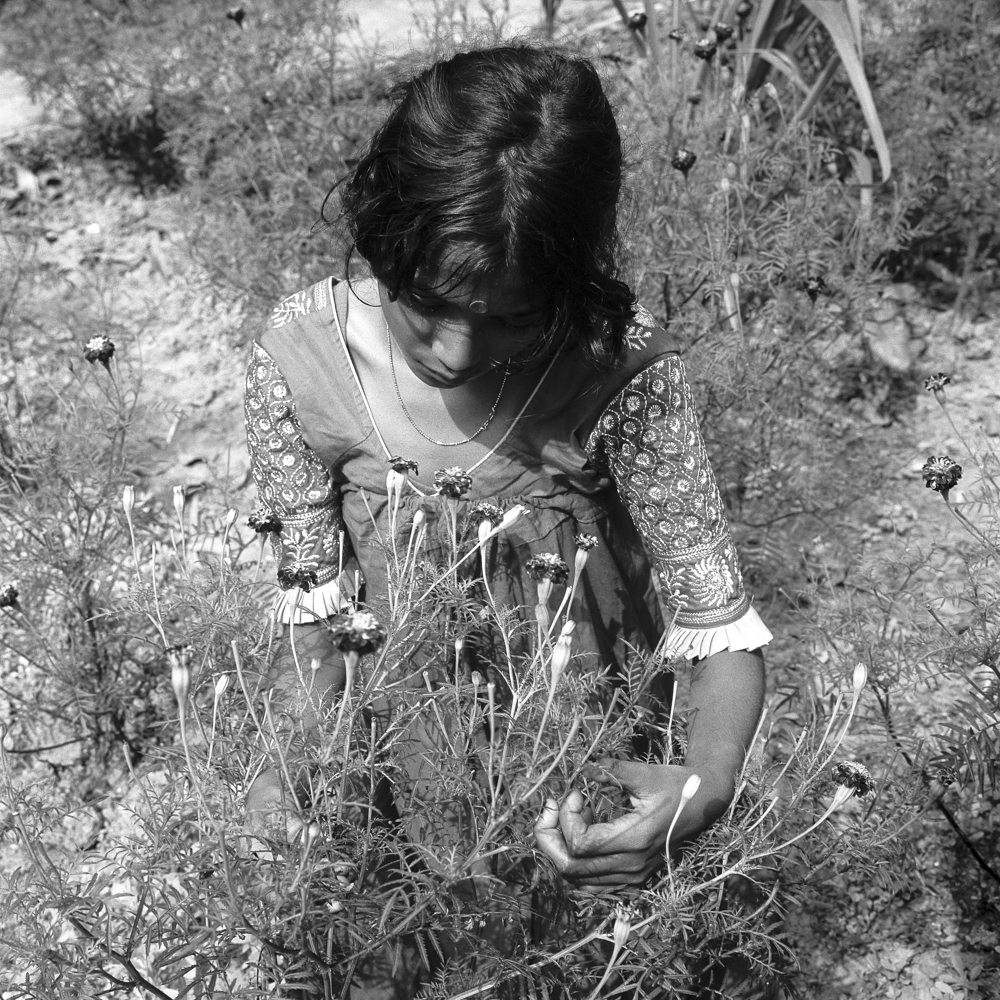

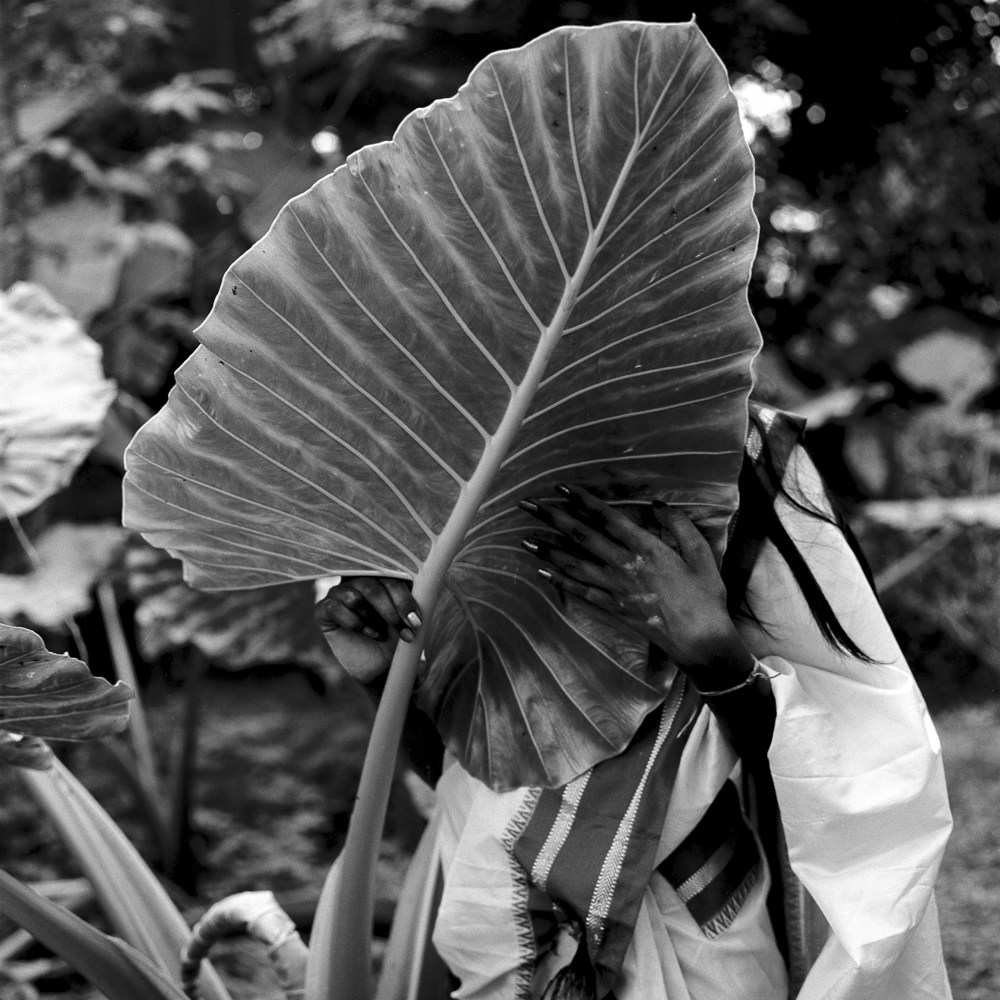





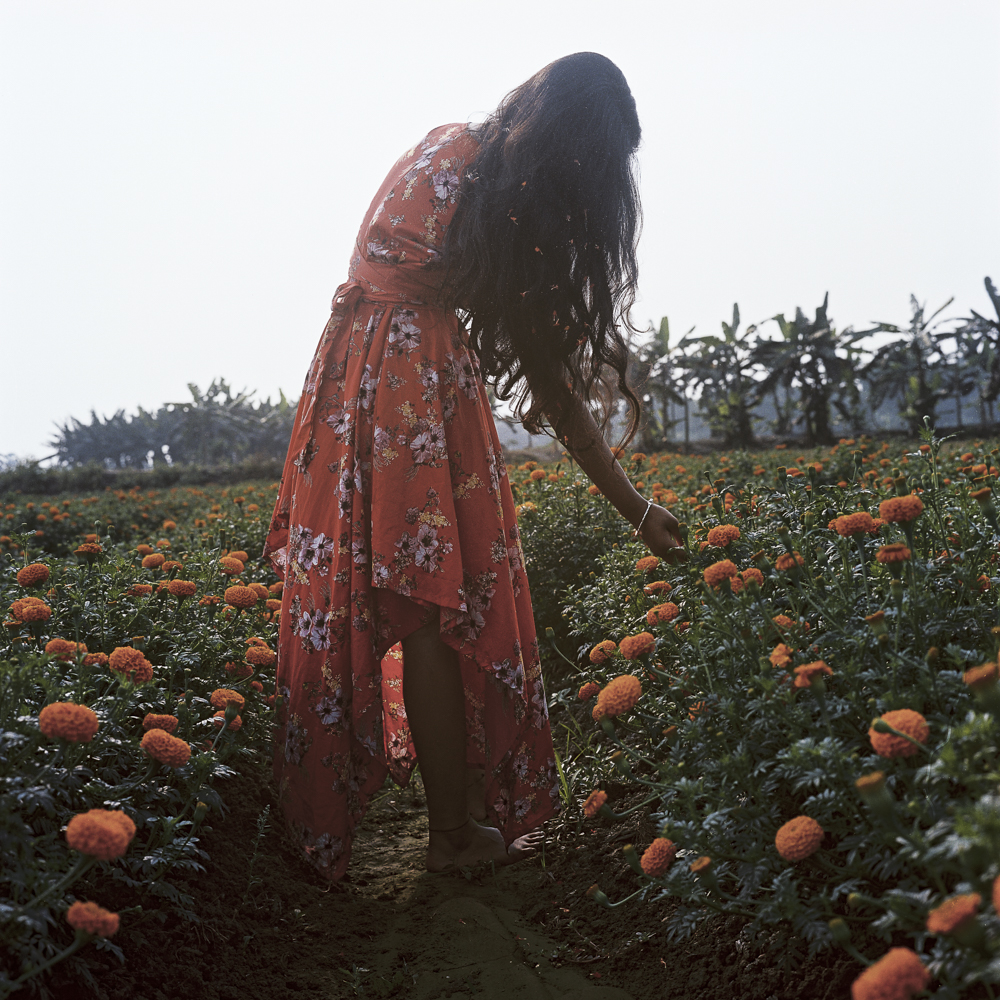



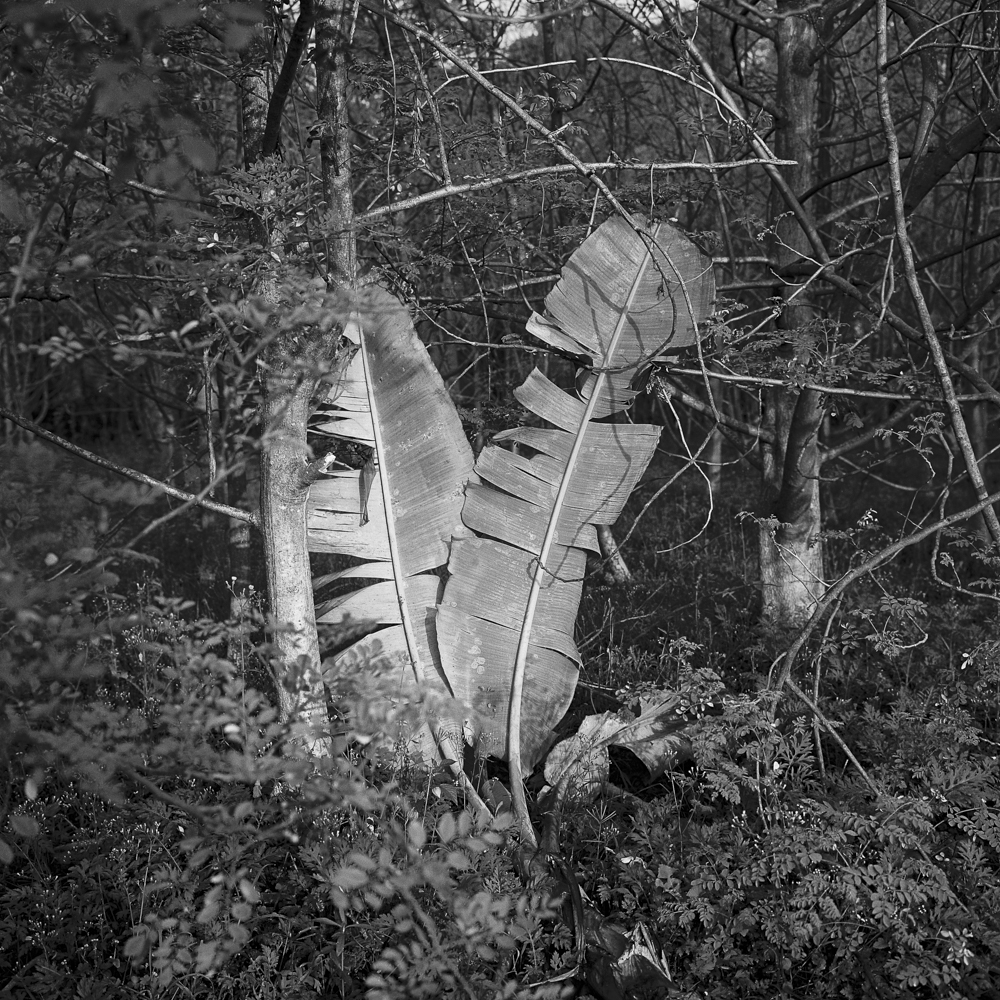
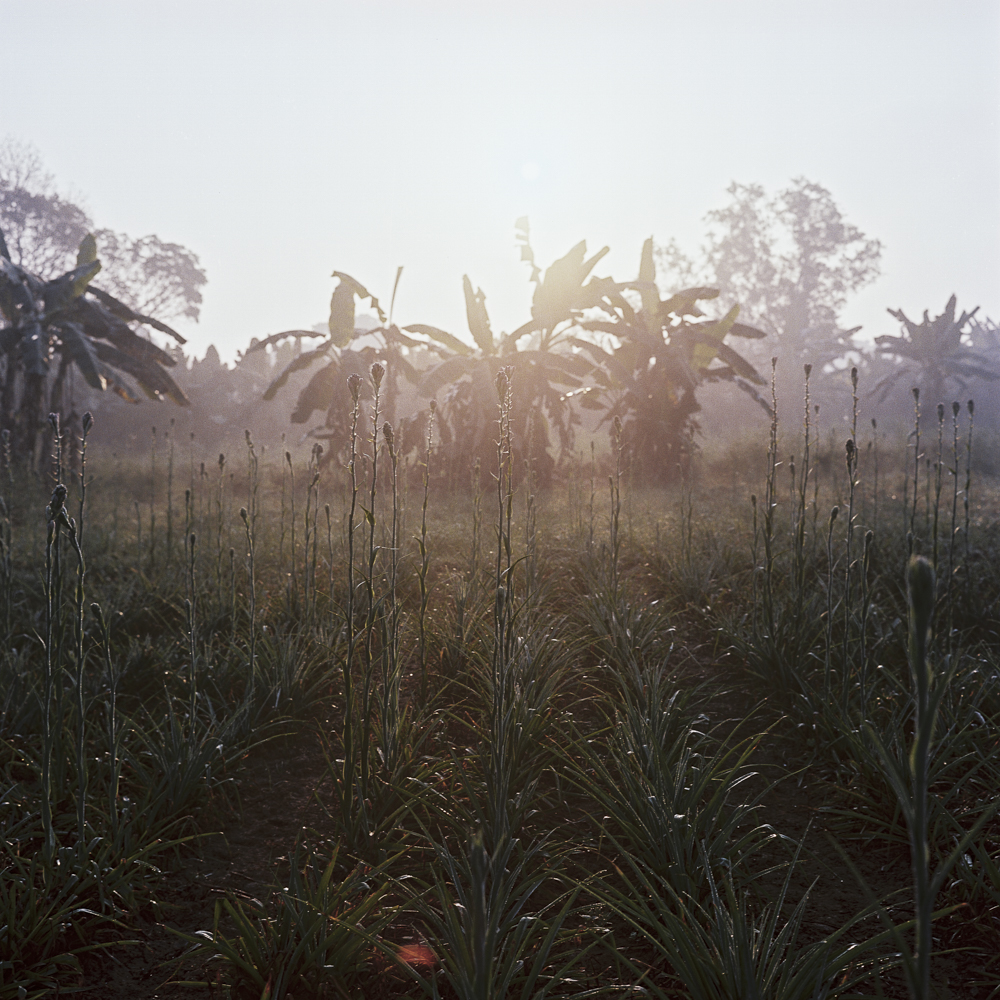



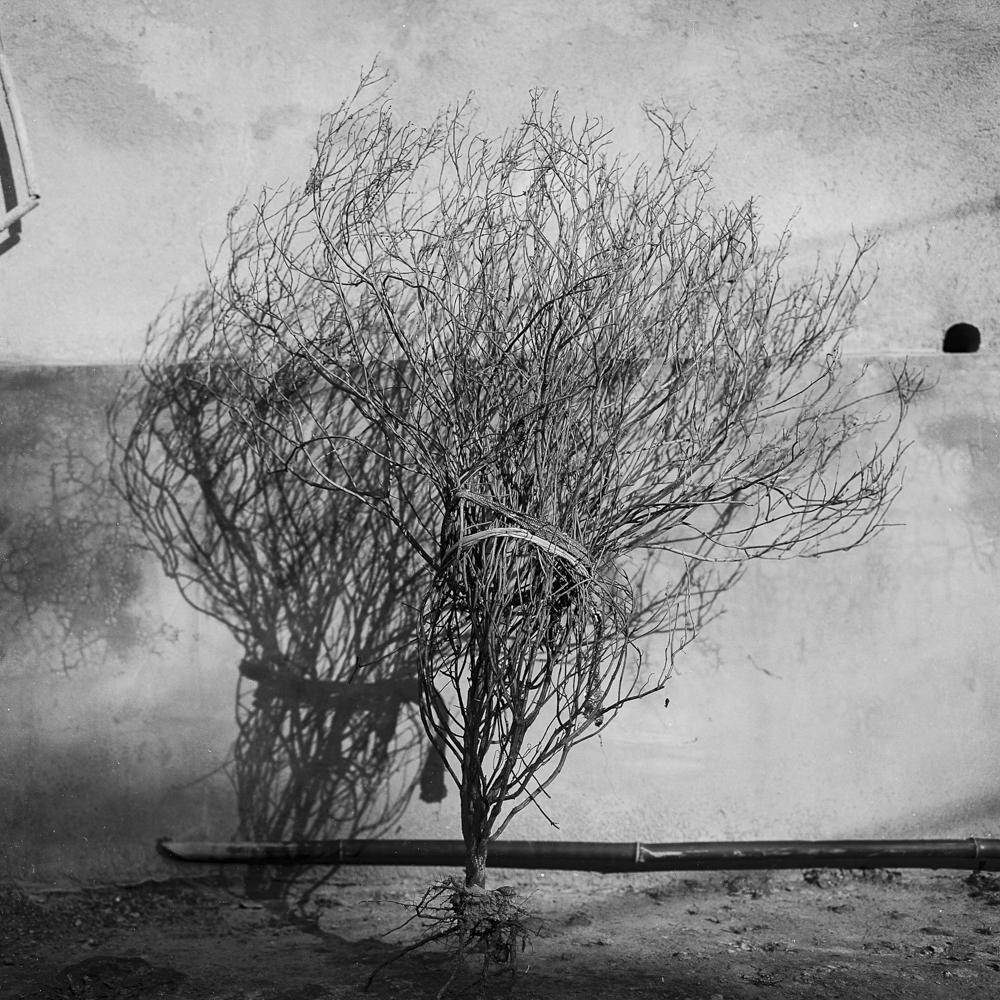


Khel
Poornima Nair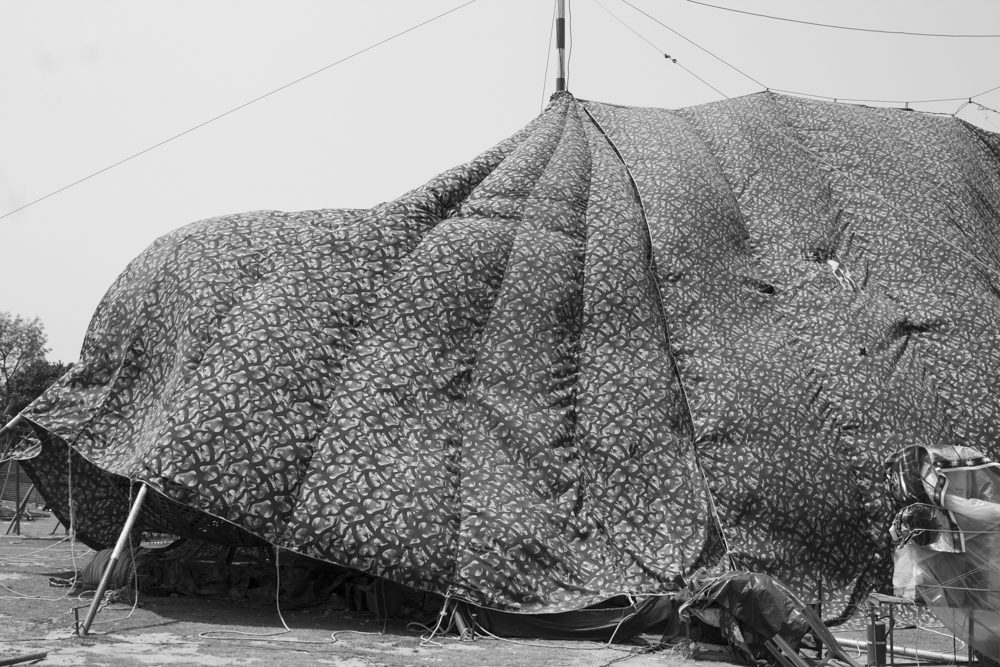



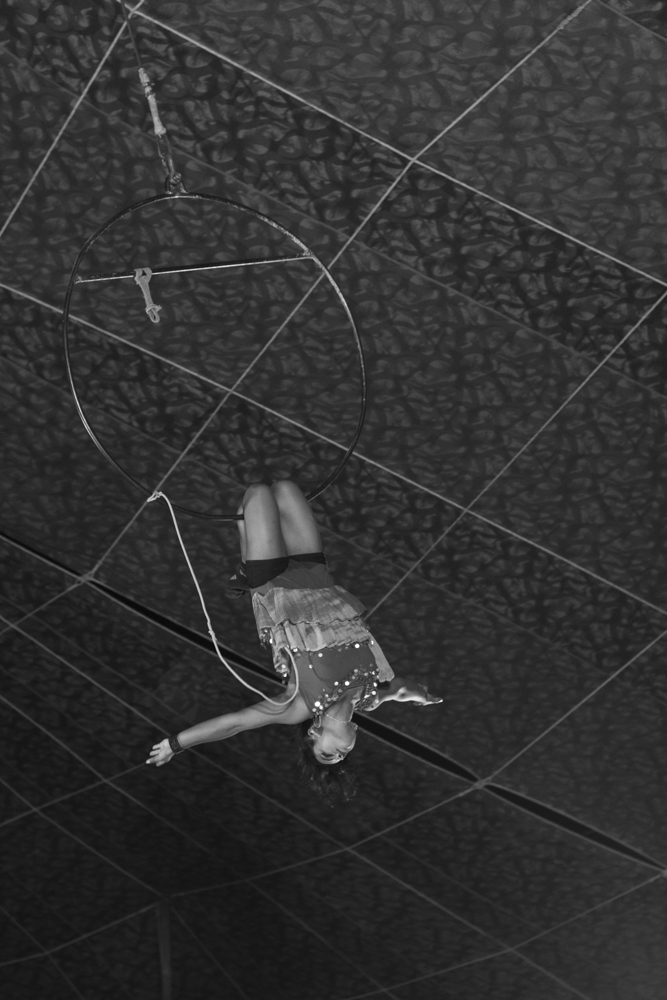
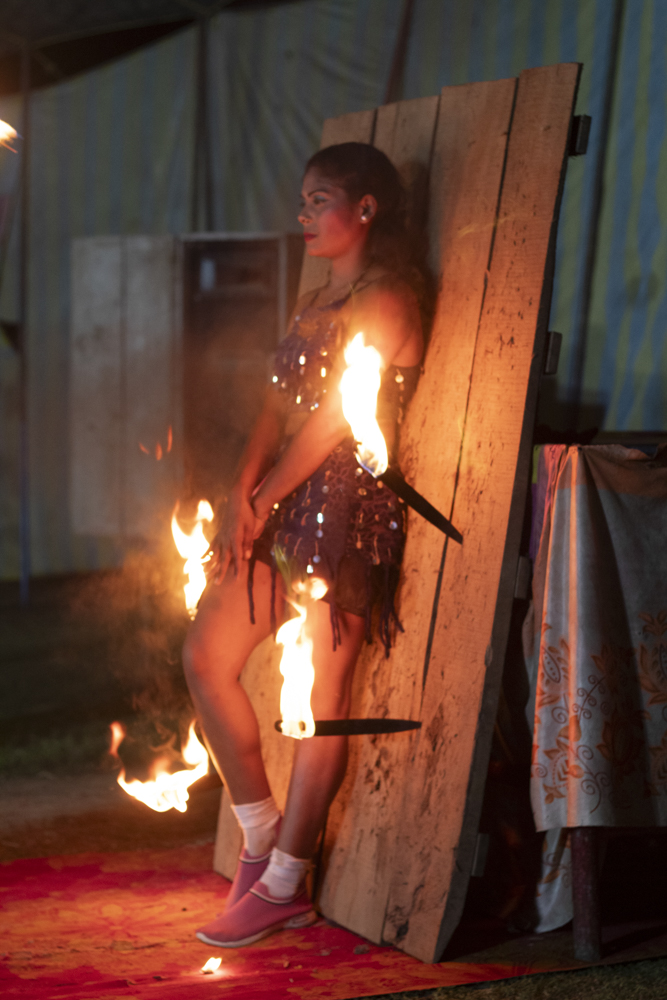

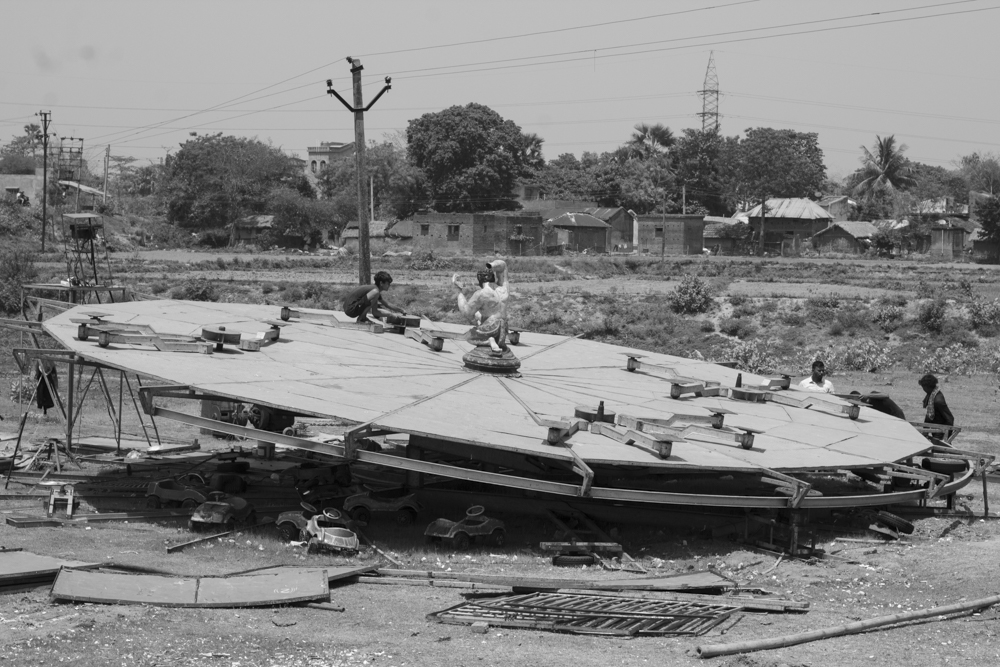












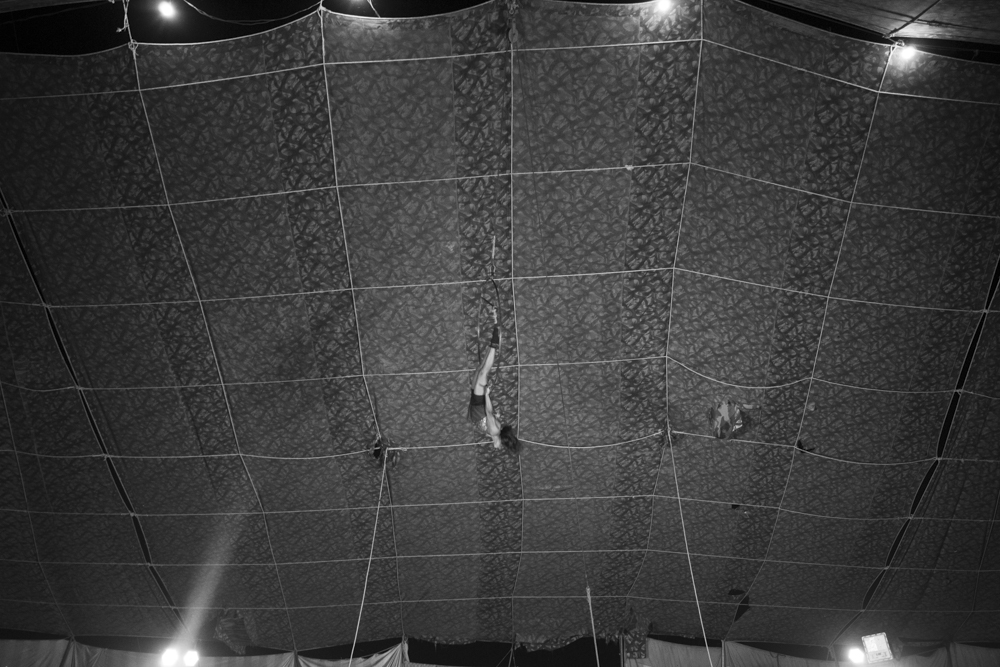
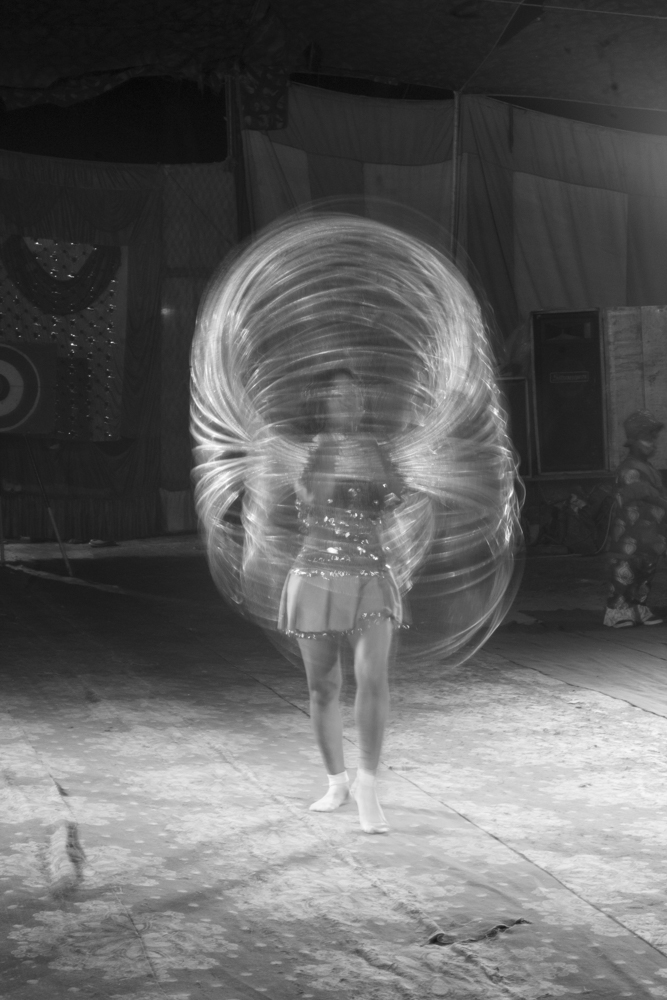

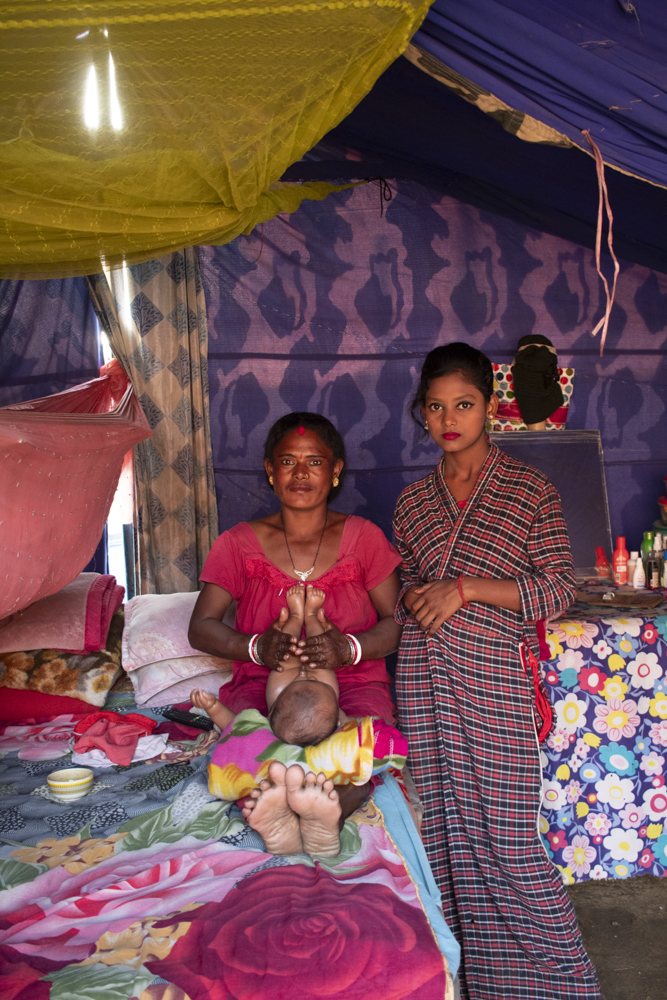
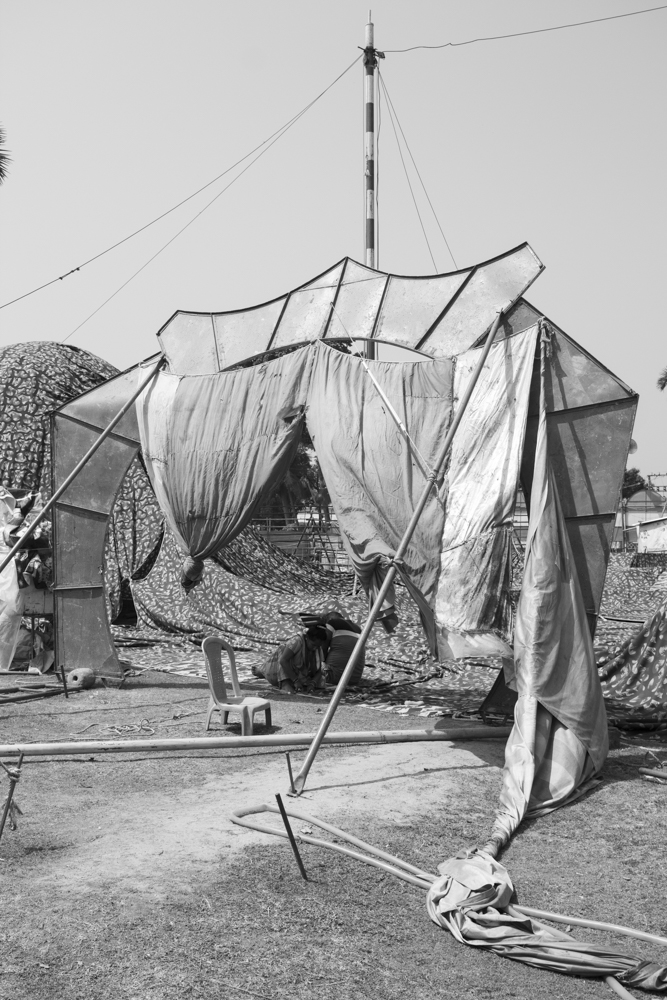
Khel sets the stage for an Indian travelling Circus, Ujala Circus. A troupe with 50 artists and their families, they perform through the year as they move along interior Bengal, Assam and Orissa. Their Tamboo, their magic carpet.
The Circus is a tightrope between reality and fantasy, from acrobatics to aerial acts, these artists constantly irt with danger as they perform. Their lives are centred on the Circus with generations of a family that live and work here. Often set within the premises of a mela, the seasons shift more quickly here as they move from one camp to another every couple of weeks, carrying with them their homes and their stage.
Among all that is temporary what remains constant is their unparalleled sense of community, a familial bond that transcends the limitations of language, regional and
religious identities and also their continued faith in their art form.
The Circus is a tightrope between reality and fantasy, from acrobatics to aerial acts, these artists constantly irt with danger as they perform. Their lives are centred on the Circus with generations of a family that live and work here. Often set within the premises of a mela, the seasons shift more quickly here as they move from one camp to another every couple of weeks, carrying with them their homes and their stage.
Among all that is temporary what remains constant is their unparalleled sense of community, a familial bond that transcends the limitations of language, regional and
religious identities and also their continued faith in their art form.
A Thousand Scrums
Sabin Shrestha
My work revolves around the transformative impact of rugby on the life of a young girl amed Chanda from Saraswatipur, a small village in West Bengal. She lives in a remote village where tea gardening is the primary source of income. Most people are limited to age-old professions, following in the footsteps of their parents, as there are no
opportunities to receive quality education.
Amidst this, Chanda, along with many other children, was introduced to rugby by the non-pro t organization Khelo Rugby. Over the years, Chanda excelled in the sport, participating in various tournaments from local to international levels.
Now 25, Chanda re ects on how rugby has shaped her life, and helped her break the gender barrier and move towards a future focused on personal growth and helping the children of her village. Her journey serves as an inspiration, showcasing the power of sports in empowering individuals.
opportunities to receive quality education.
Amidst this, Chanda, along with many other children, was introduced to rugby by the non-pro t organization Khelo Rugby. Over the years, Chanda excelled in the sport, participating in various tournaments from local to international levels.
Now 25, Chanda re ects on how rugby has shaped her life, and helped her break the gender barrier and move towards a future focused on personal growth and helping the children of her village. Her journey serves as an inspiration, showcasing the power of sports in empowering individuals.
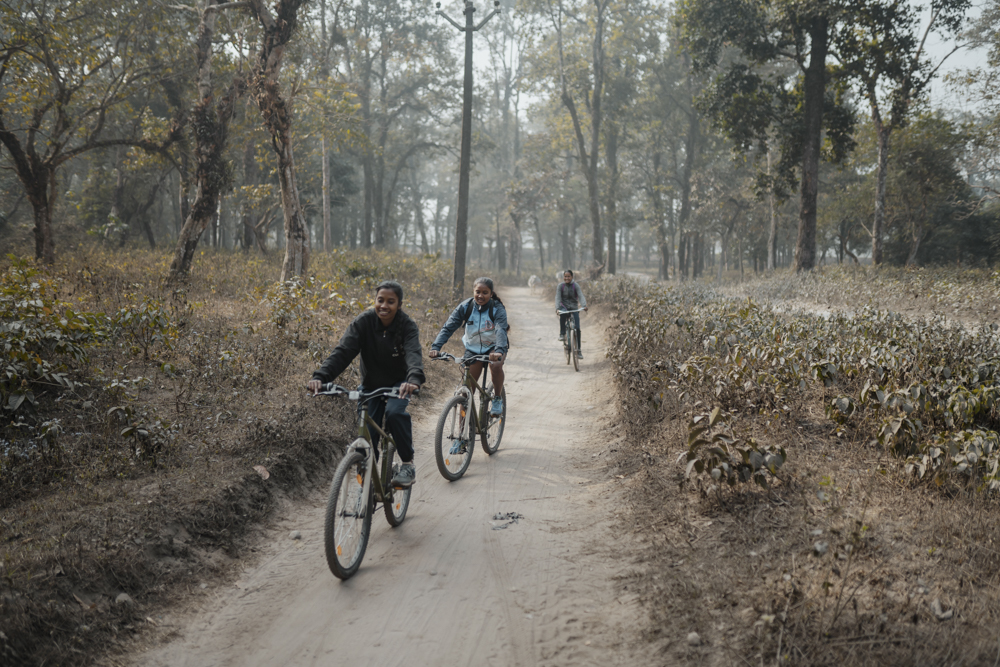






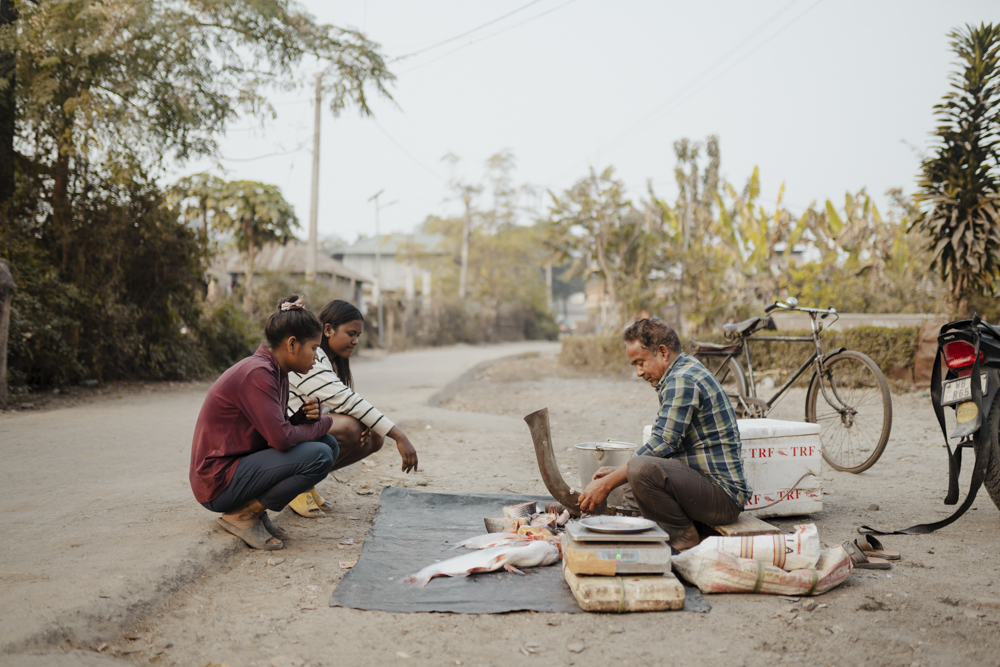

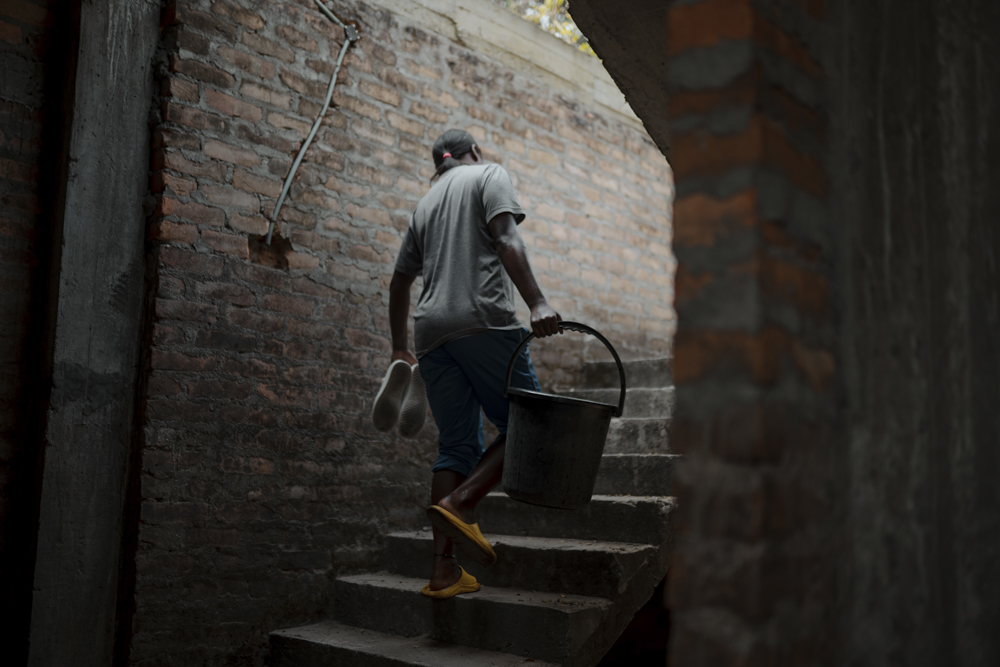
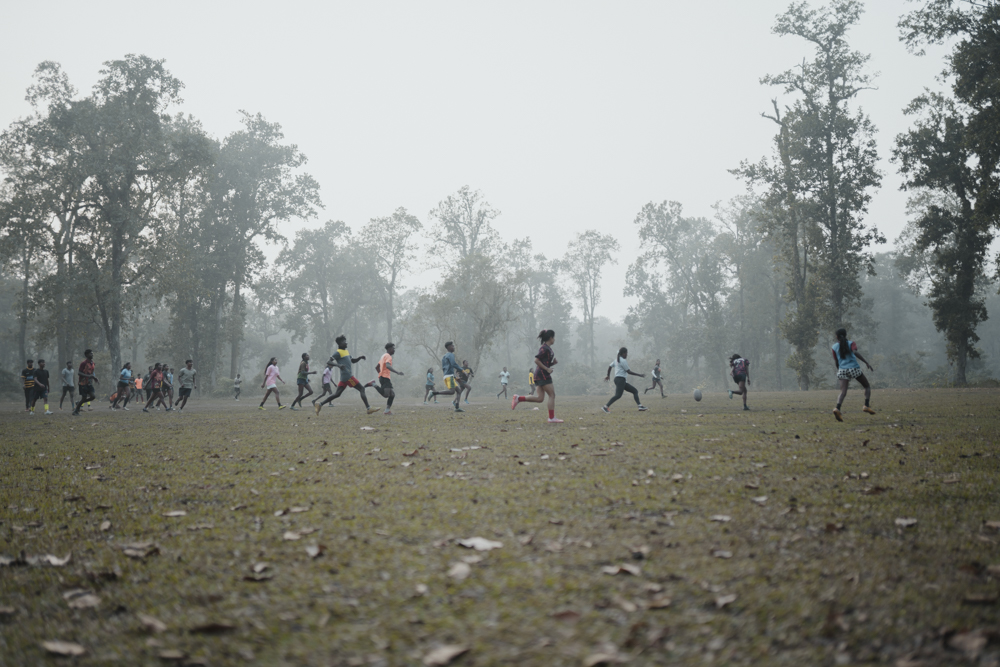







Bubble Wrap
Suparna Nath


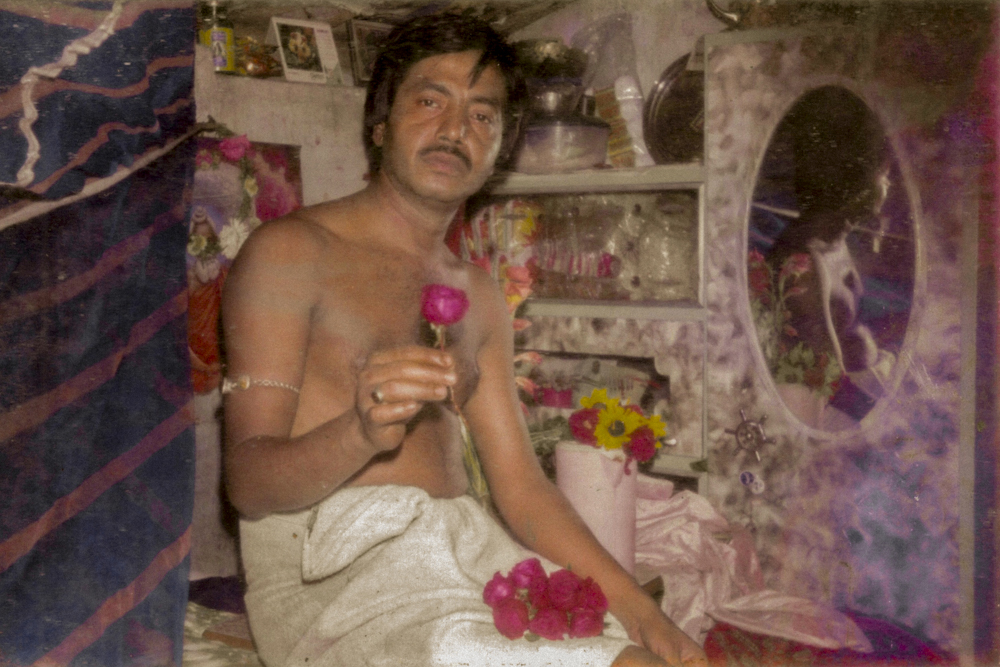










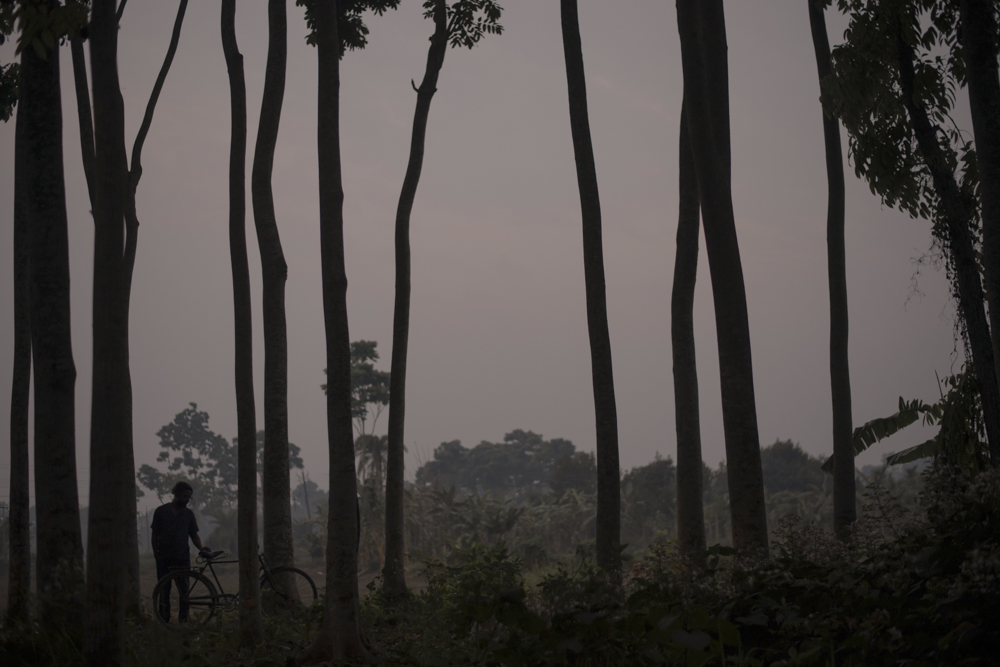


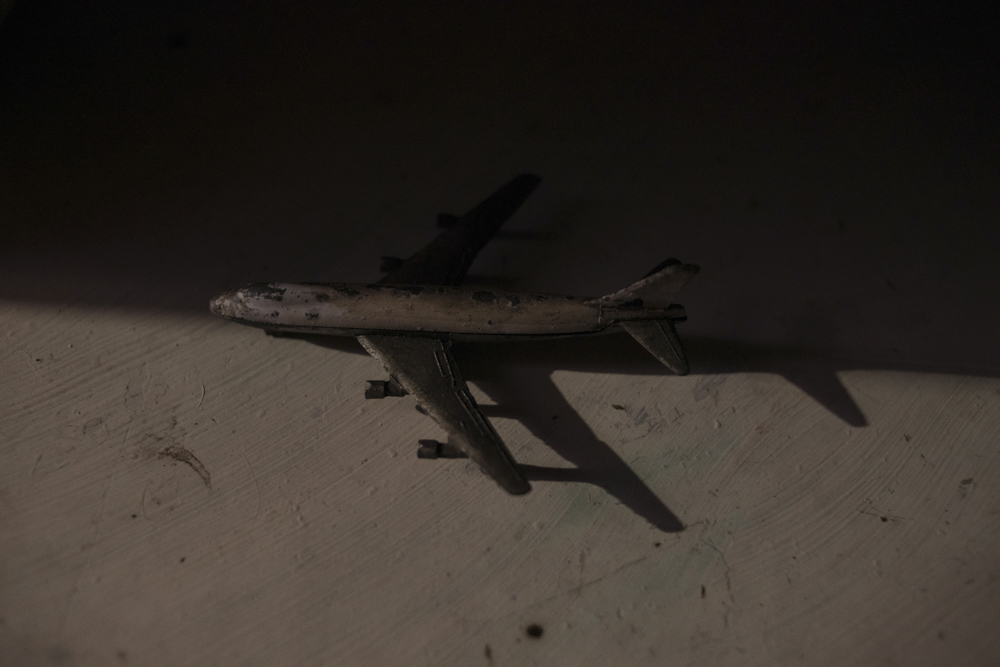

I’ve seen my father disappearing many times as a child. Then suddenly he would come back one day with attractive things like maps, books, binoculars, magazines and his face full of beard. I couldn’t recognise him. It was unpredictable when he is going to play which character. His mental illness never helped me understand him as
person or as a father. My mind started creating a hollow gap in his place.
I’ve seen my father laying down on the bed for days. Then often he would talk about many things which nobody understood. It was very strange for me. I was carrying the fear that I may also become ill like him, genetically, at a point of my life.
As I’m getting older, I’ve started to decode my father. Regular medications & my mother’s constant nurturing has made him more amiable. I can talk with him, listen to him with ease. Sometimes we go travel or listen to music together. The visuals reveals my understanding of my father more as a person.
person or as a father. My mind started creating a hollow gap in his place.
I’ve seen my father laying down on the bed for days. Then often he would talk about many things which nobody understood. It was very strange for me. I was carrying the fear that I may also become ill like him, genetically, at a point of my life.
As I’m getting older, I’ve started to decode my father. Regular medications & my mother’s constant nurturing has made him more amiable. I can talk with him, listen to him with ease. Sometimes we go travel or listen to music together. The visuals reveals my understanding of my father more as a person.
Kabzā
Vishesh AnandKabzā examines the evolving landscape of a town where history and religion collide, revealing the deeper currents of political and cultural tension.
A small town in Central India, lled with ancient relics and ruins, has become a place where history is being manipulated to serve prejudiced narratives, often at the expense of the Muslim community.
Regional activists have propagated claims that an ancient religious site was originally a emple, using these narratives to justify violent protests and demanding a 'reclamation.'
Kabzā documents the climate as it moves toward a more hardline, sa ronized ideology. It explores how social narratives are leveraged to justify marginalization and encroachment.
In the shadows of the old ruins, the sa ron tide doesn't just threaten the history etched in stone—it endangers the delicate threads that once united this community.
A small town in Central India, lled with ancient relics and ruins, has become a place where history is being manipulated to serve prejudiced narratives, often at the expense of the Muslim community.
Regional activists have propagated claims that an ancient religious site was originally a emple, using these narratives to justify violent protests and demanding a 'reclamation.'
Kabzā documents the climate as it moves toward a more hardline, sa ronized ideology. It explores how social narratives are leveraged to justify marginalization and encroachment.
In the shadows of the old ruins, the sa ron tide doesn't just threaten the history etched in stone—it endangers the delicate threads that once united this community.






















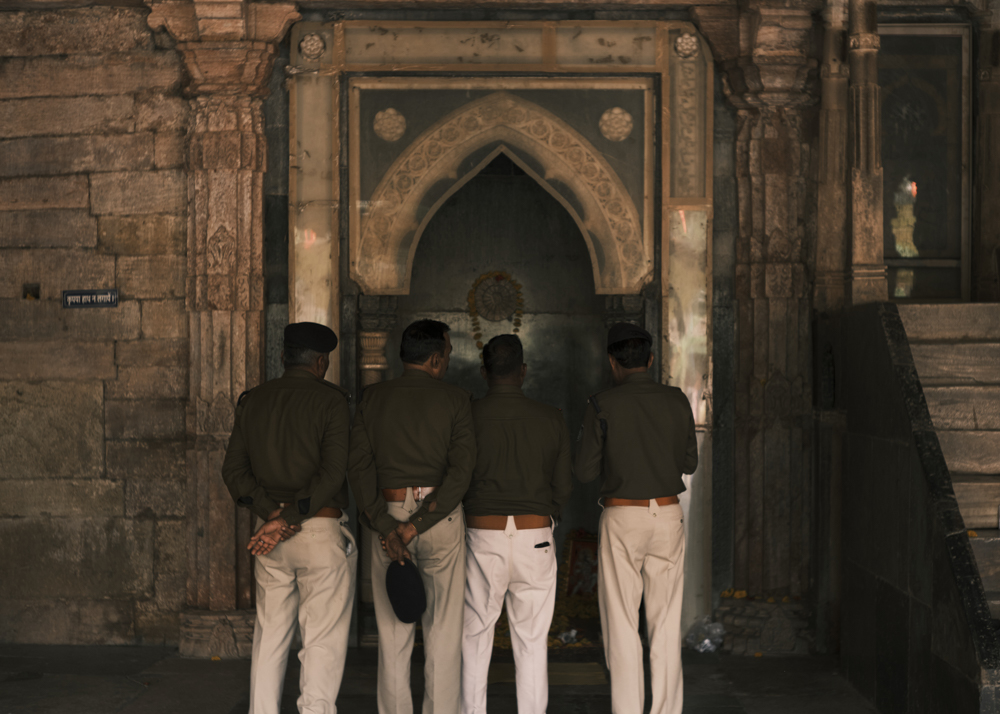















Hazaron Khwahishein Aisi
Zainab



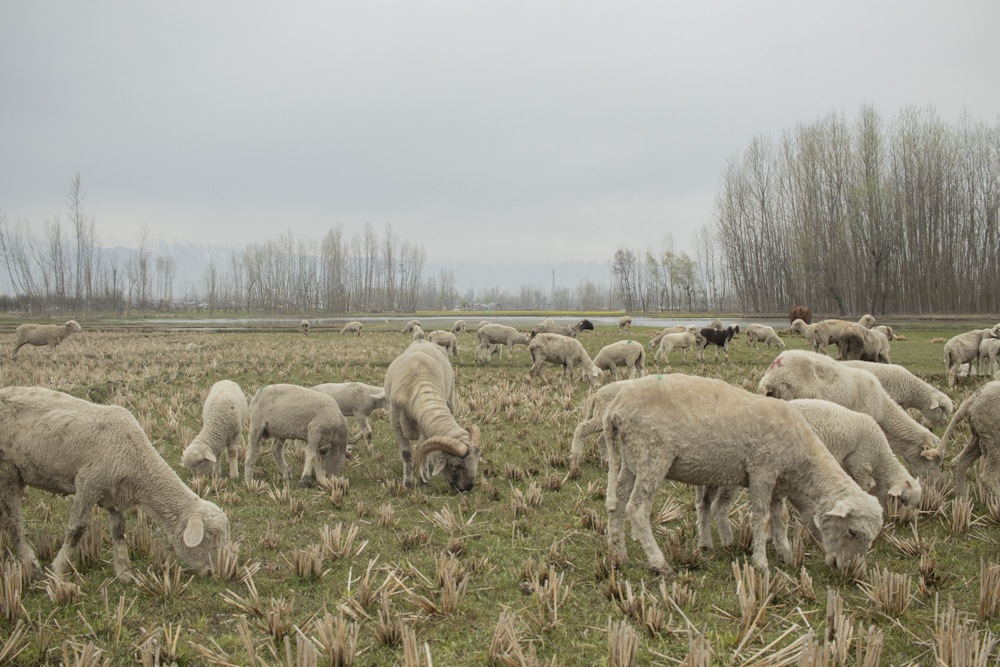
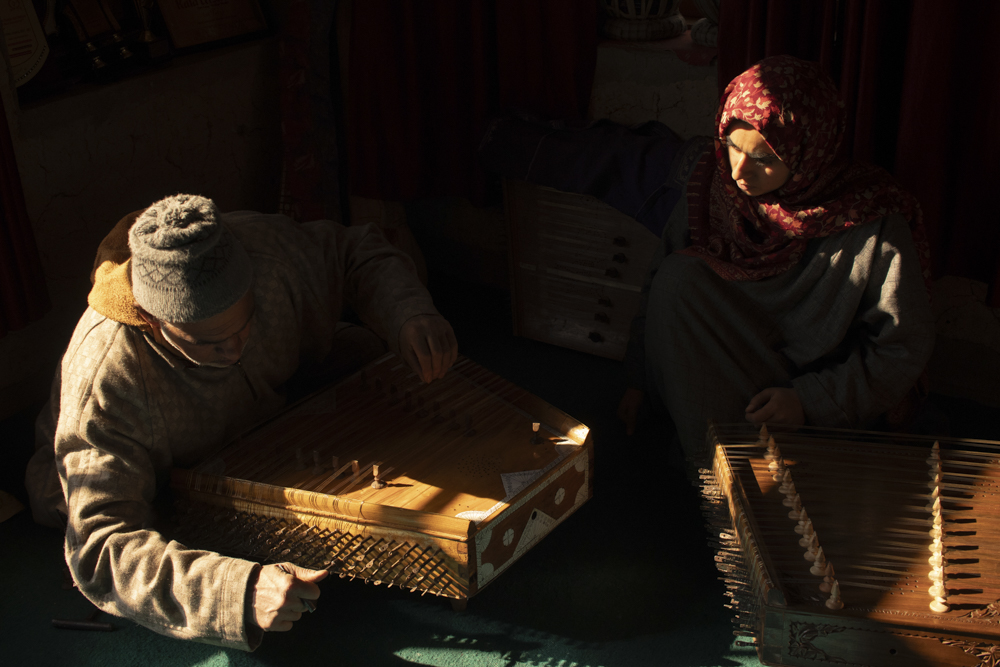



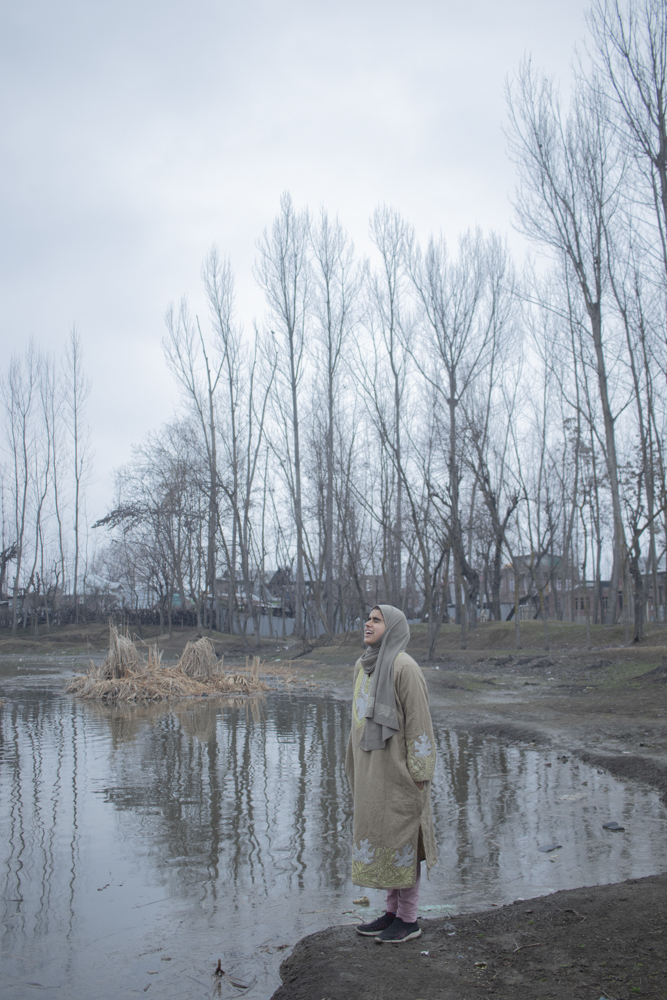



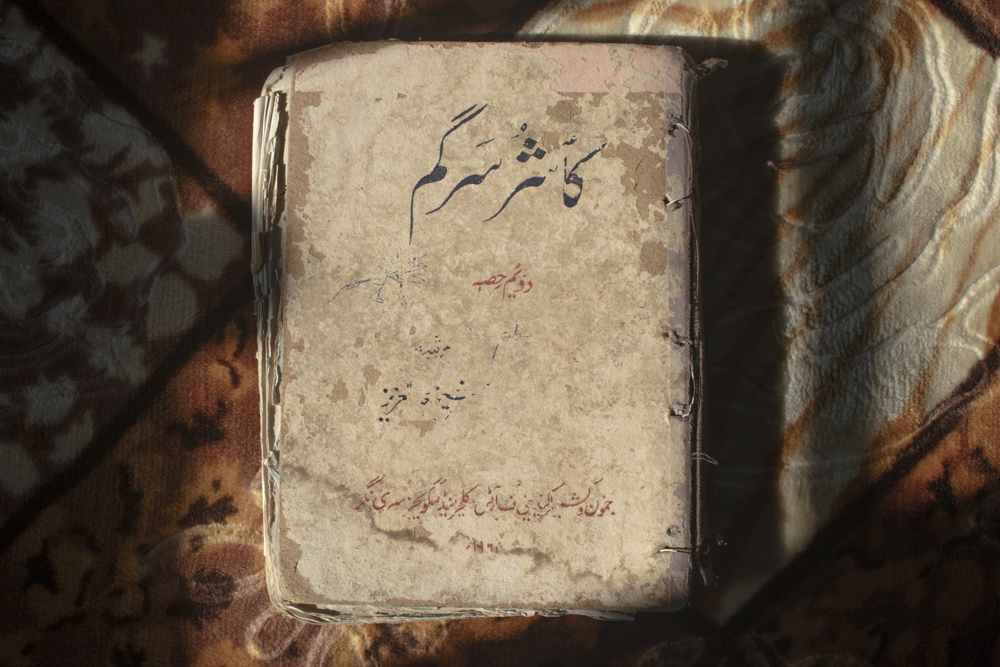

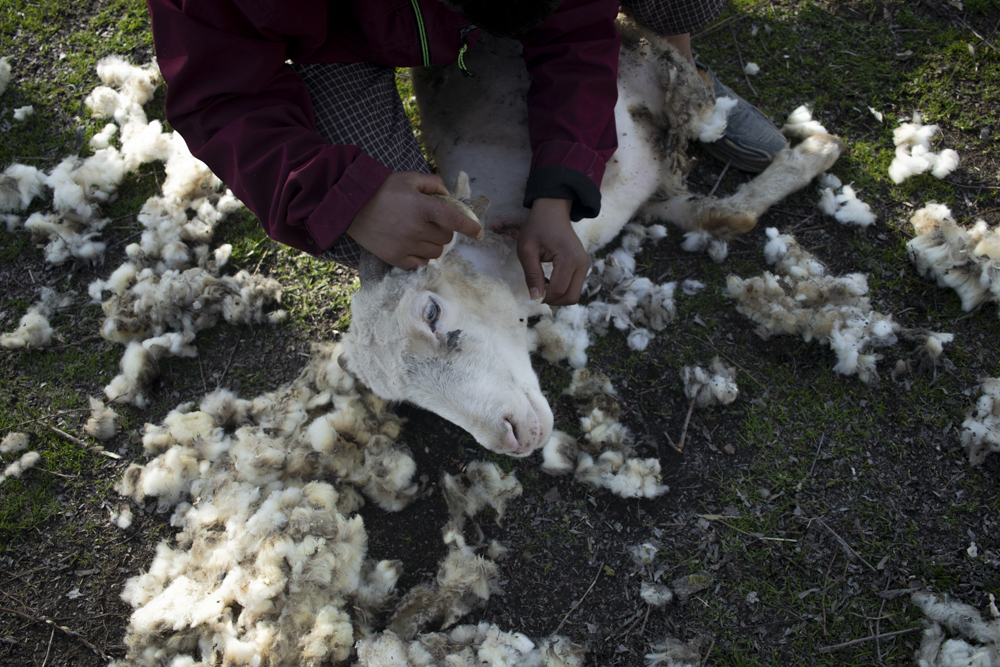
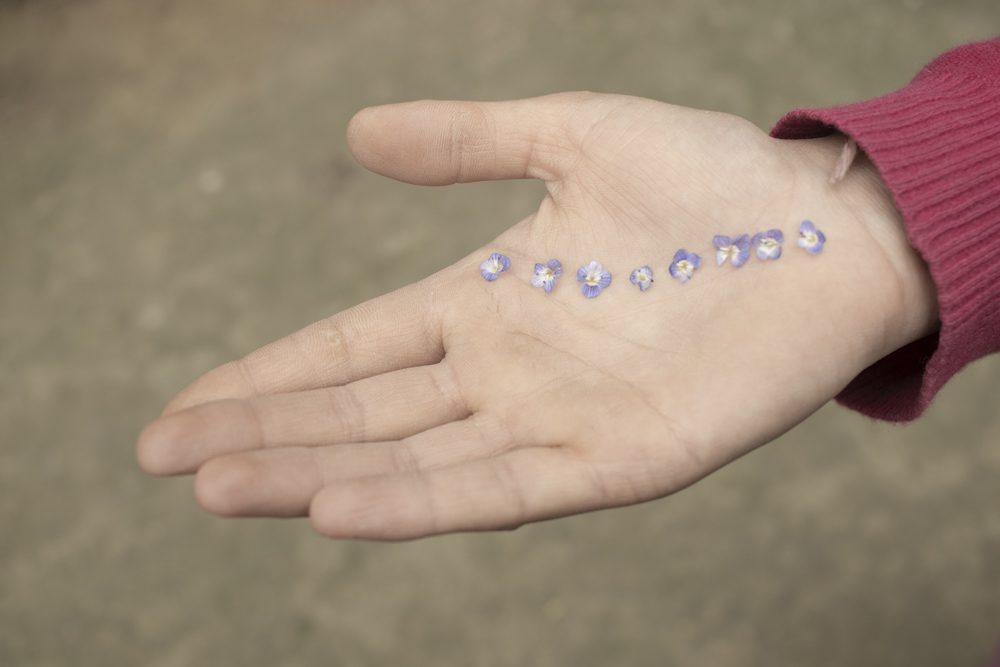






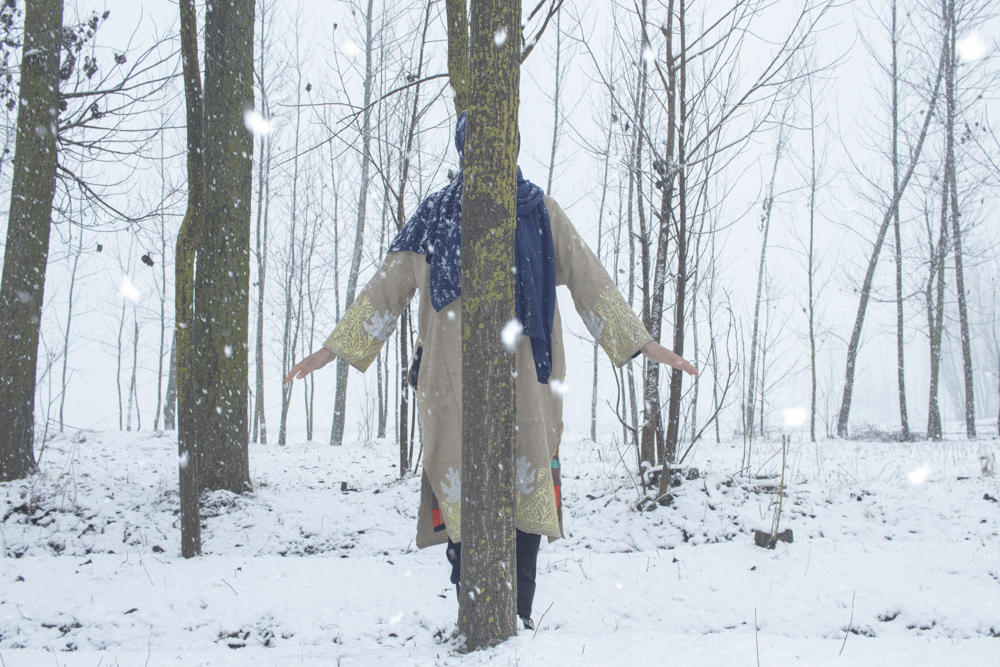

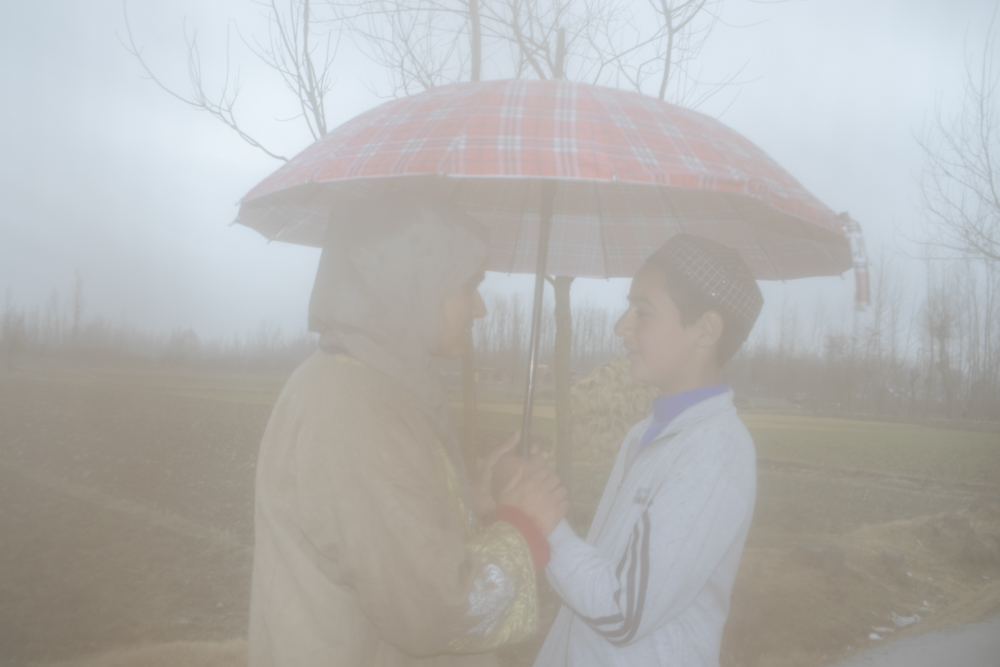
Hazaron Khwahishein Aisi follows the lives of two young sisters residing in Ganastaan— a hamlet in the northern part of Indian Administered Kashmir.
Irfana and Rehana, 24 and 22, learnt to play the strings in their pre-teens. With their father as the teacher, from early on, the tunes of Santoor, Kaeshur Sitar, Saaz-e Kashmir, and Tabla reverberated in the household.
With coming of age, practicing music has become more di icult. The reyaz now happens
quietly, their hymns disappearing into the chirping of birds.
The photographs draw upon the sense of seclusion that comes with breaking barriers. Yet what follows is deep friendship amongst the duo.
With the culture and identity threatened under a colonizing regime, the sisters are carving their journey out of love for music, their homeland, and each other. Within the uncertainties of life, they’re yearning for a thousand dreams.
Irfana and Rehana, 24 and 22, learnt to play the strings in their pre-teens. With their father as the teacher, from early on, the tunes of Santoor, Kaeshur Sitar, Saaz-e Kashmir, and Tabla reverberated in the household.
With coming of age, practicing music has become more di icult. The reyaz now happens
quietly, their hymns disappearing into the chirping of birds.
The photographs draw upon the sense of seclusion that comes with breaking barriers. Yet what follows is deep friendship amongst the duo.
With the culture and identity threatened under a colonizing regime, the sisters are carving their journey out of love for music, their homeland, and each other. Within the uncertainties of life, they’re yearning for a thousand dreams.
